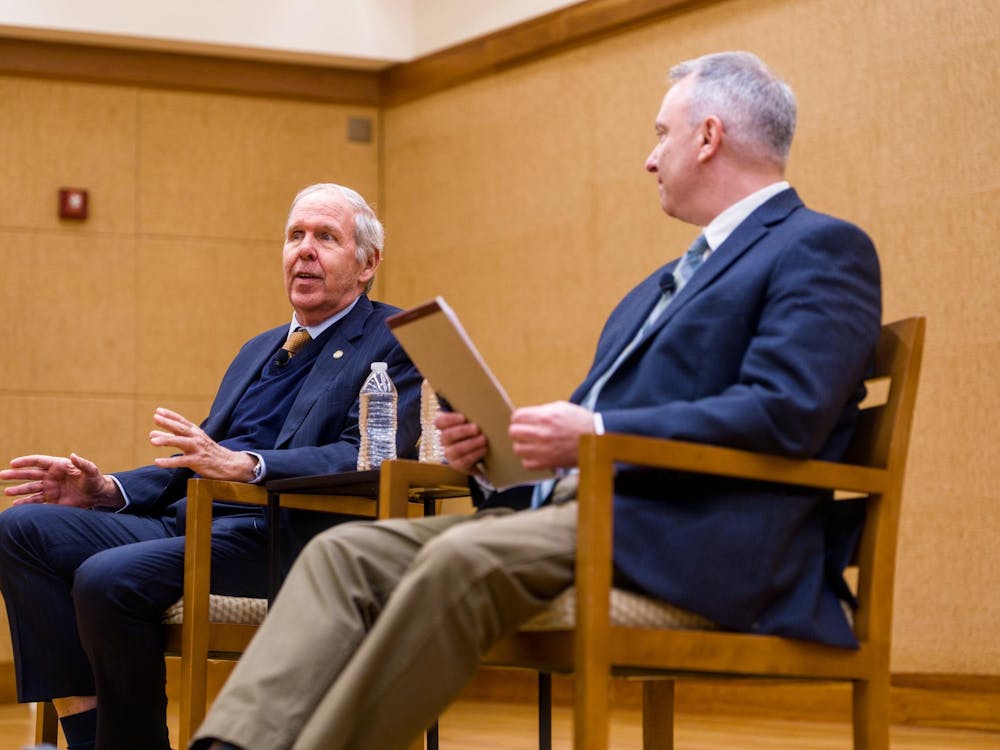With the remnants of Tropical Storm Tammy blowing through Charlottesville last weekend and Vince heading towards the Iberian Peninsula, the current tally of named storms off the Atlantic is up to 20. As hurricane season lasts until Nov. 30, we could very well run out of names for the first time. According to CNN.com, any hurricanes or tropical storms after the last named one of "Wilma" will be named after a letter of the Greek alphabet, starting with alpha and going down the line as needed. Hurricane Katrina devastated New Orleans, and Rita threatened to erase all the work done by the rebuilding crews only a few weeks later. Last year Florida was almost continuously being threatened by spiraling cloud formations in the Atlantic. There is no denying that we have recently been experiencing an increase in not only the number but also the magnitude of tropical storms than in many previous the seasons.
The question is: Why?
Hurricanes form when low pressure fronts form over warm-water regions. The winds start spiraling, and the storm gains moisture. It follows that when there is more warm water, there will be more tropical storms. The Web site explained how this fact leads many amateur climatologists to conclude that since global warming is heating up the planet and its water, thus increasing the number of more devastating hurricanes. Conclusions such as this ignore the natural cycles that control hurricane activity. According to CNN.com, the system, called Atlantic Multidecadal Oscillation, is driven by ocean currents, and while it causes extreme storms in the east, it also causes droughts in the western part of the country. The warmer the AMO, the more extreme the weather will be. From the 1960s until the mid 1990s, this cycle was in an inactive period where there were few hurricanes and even fewer that made landfall. In 1995, however, the AMO warmed up and caused this increase in hurricane activity that we have seen lately. As far as meteorologist Hugh Willoughby (interviewed by CNN.com) can tell, there is no proof that global warming has anything to do with the current active period. Statistics from the National Hurricane Center reinforce the assertion that the last active period was in the late 1960s.
Unfortunately, since the last active period 30 years ago, there has been a lot more development in the coastal areas of Florida and the rest of the Southeast. Consequently, hurricanes with less power can do more damage because they have so much more to hit. The calm in the storm prompted building all over. While some areas, such as south Florida, have hurricane codes for building constructions, other places not affected as much since the last active cycle (like the Gulf Coast of Alabama, Mississippi and Louisiana) do not have these building regulations, according to CNN.com. On top of the lack of preparedness, there is also the rapid development in this area. So not only are the buildings not as strong as they should be, there are more of them than in the past. The result is greater devastation left in the wake these deadly storms.
"It's strange to me that areas that could potentially be hit by hurricane force winds don't have stricter building codes or effective methods of evacuation," said Jennifer Rafferty, a first-year College student from Miami, Fla. "It probably would have cost these cities money to enforce the codes and to evacuate their citizens, but think of all the devastation that could have been prevented."
In this first active cycle since the mass development of the 1970s and 1980s, Katrina's devastation might repeat on other unprepared coastal areas. Data from the National Hurricane Center shows that active cycles can last up to four decades, which means this cycle is only a quarter of the way through. Although it is too early to make conclusions, it is possible that the atmospheric warming trends of global warming may be heightening the affects of these active cycles by increasing the temperature of the Atlantic Ocean. Regardless, it is safe to assume that there will be many more tumultuous hurricanes in the immediate future.






